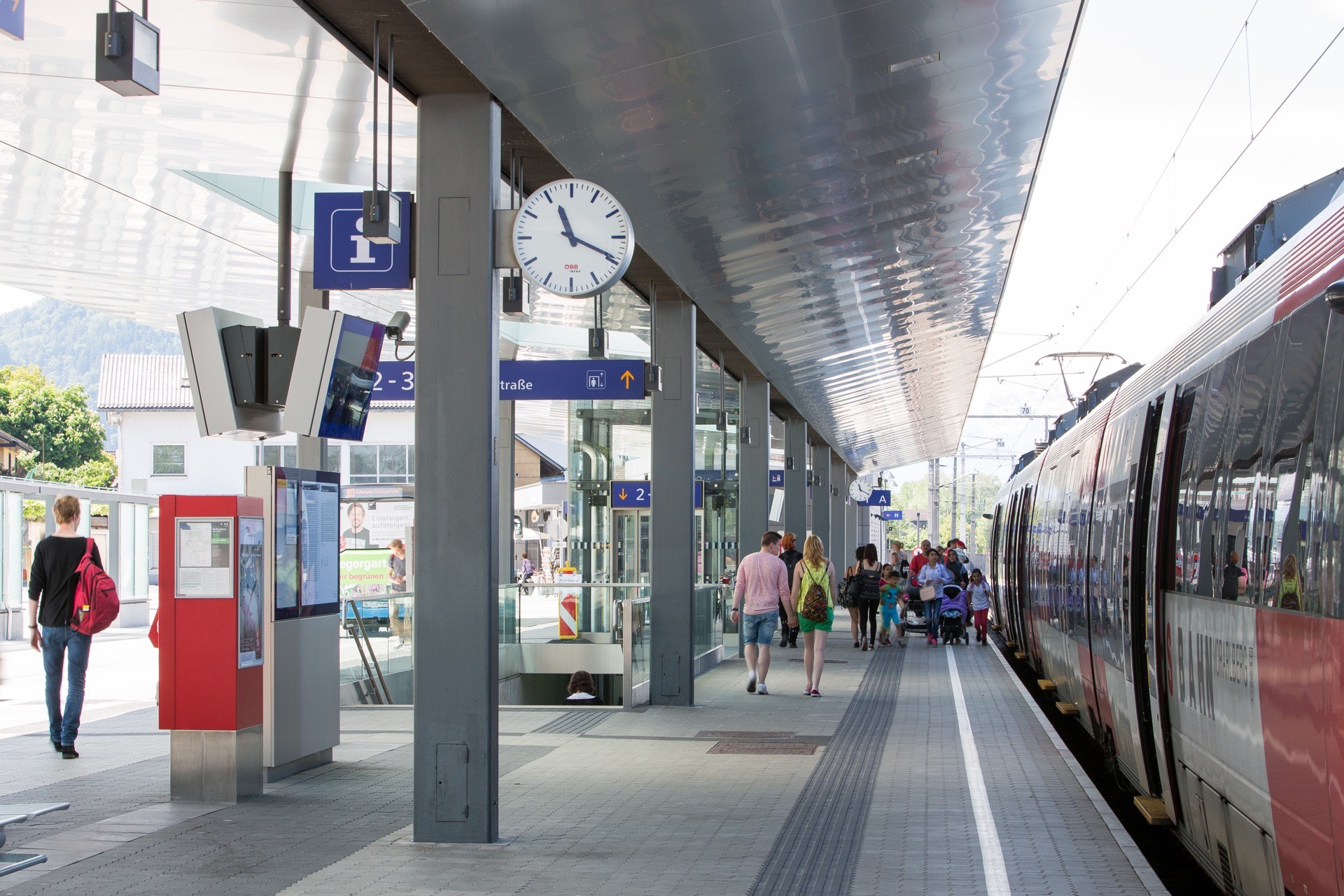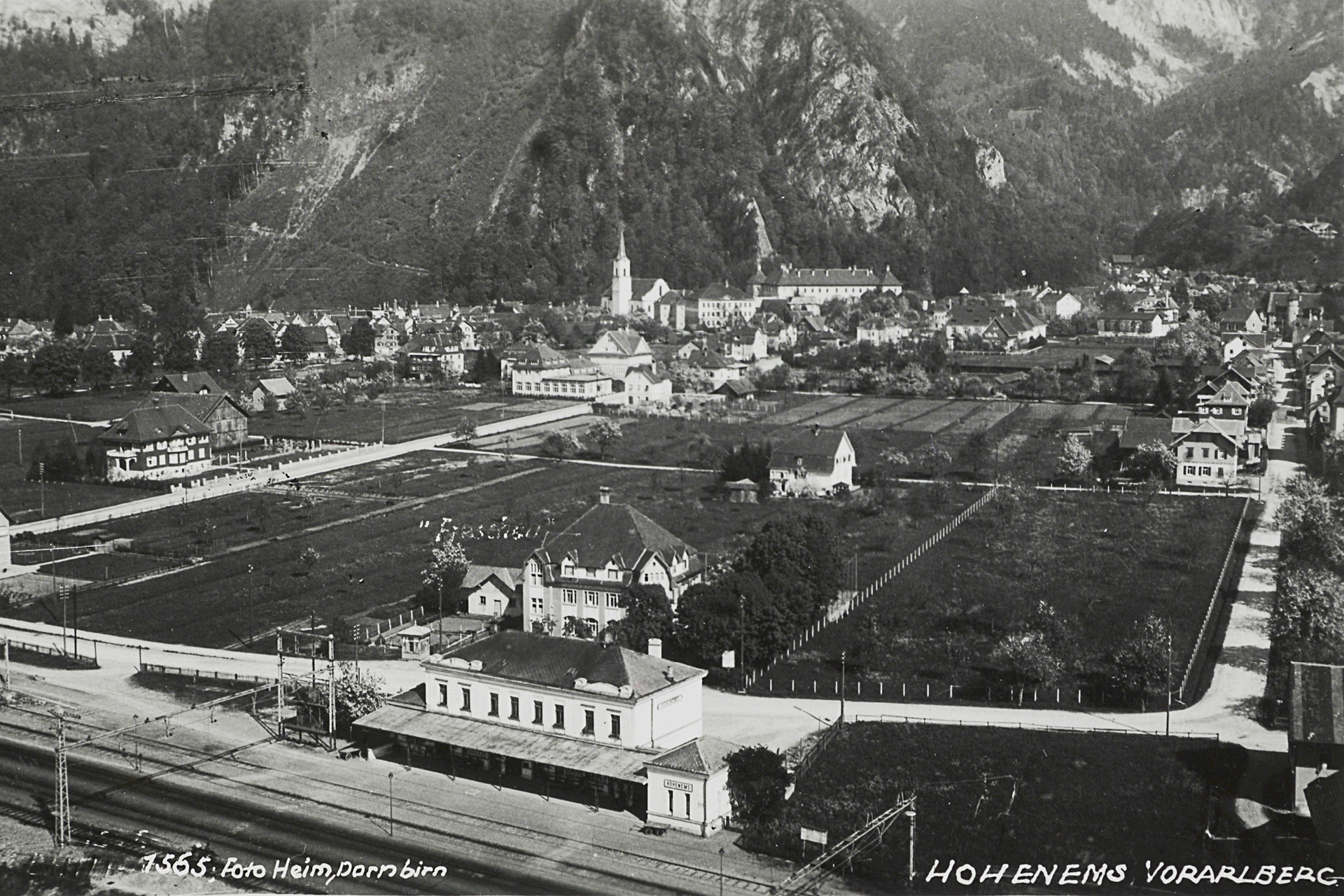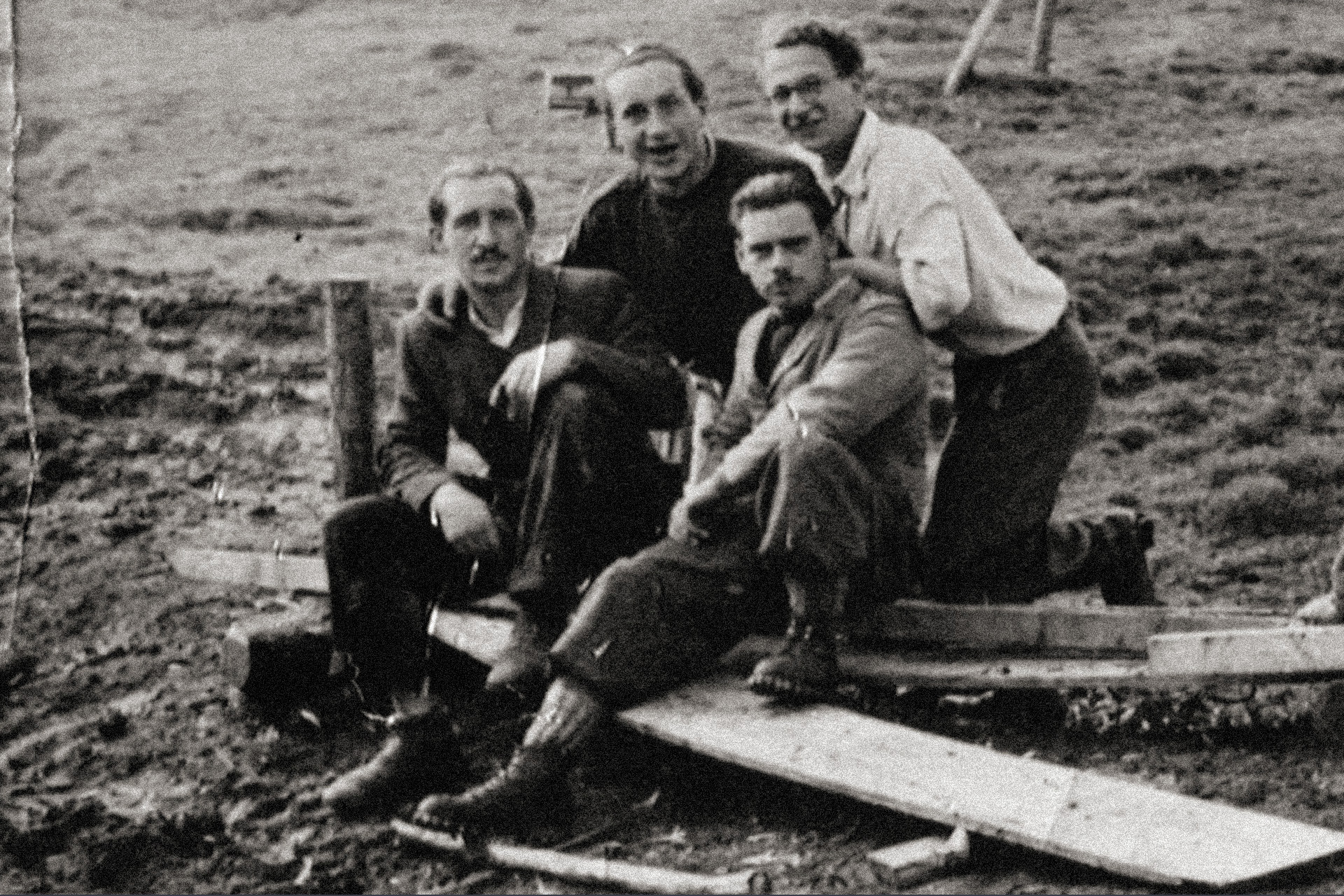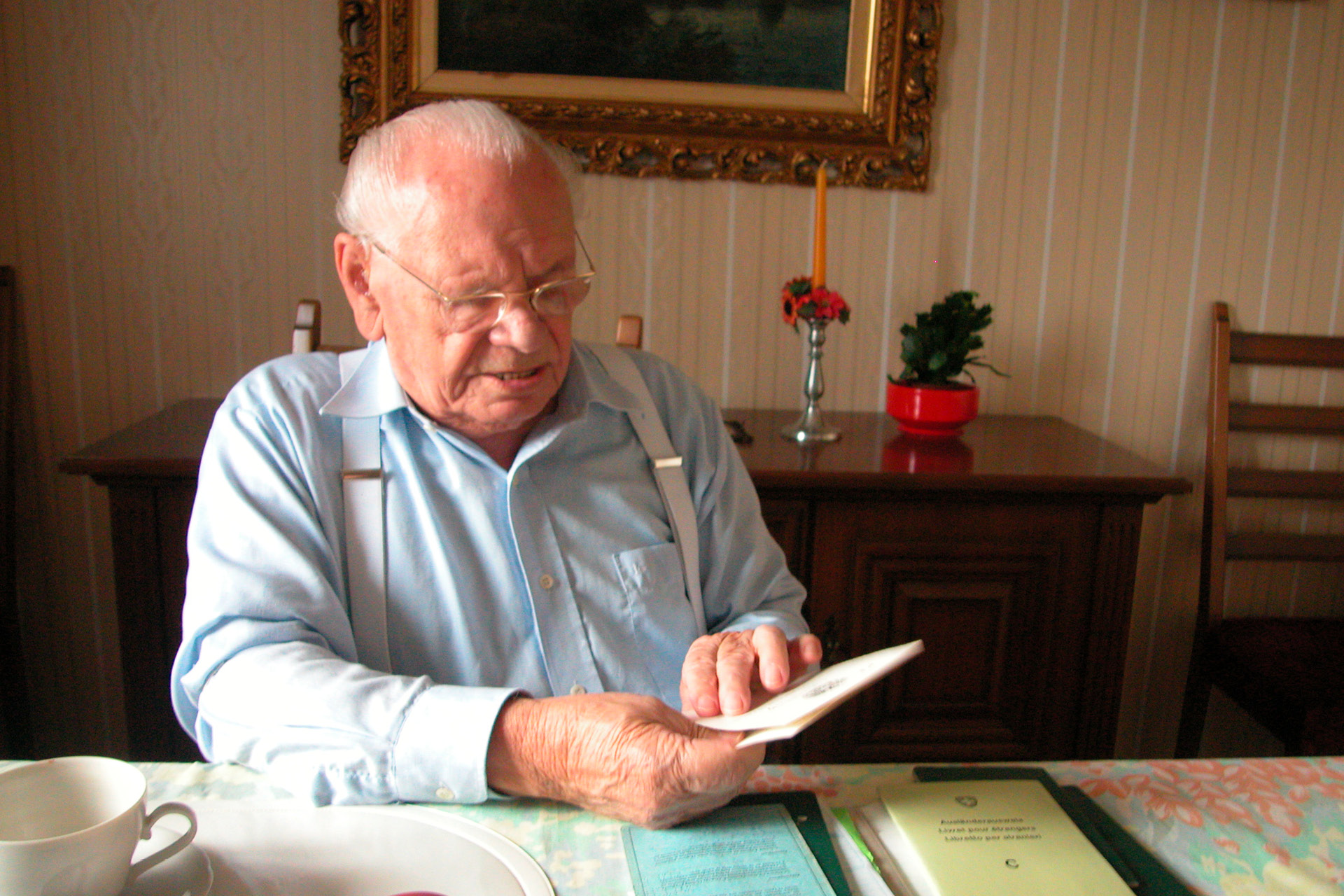Paul Pivnik> Summer 1938
26 Paul Pivnik
”I played cards with him in the evening”. Paul Pivnik experiences fanaticism in Vienna and escapes to Switzerland via Hohenems.
Vienna – Hohenems, summer 1938
“After Hitler's invasion of Vienna, well Austria... I saw the march into Vienna and Hitler's drive to the Hofburg, Mariahilferstrasse. And the fanaticism of the population, it was like, abnormal. An enthusiasm, they shut down all thinking, all thought.”[1]
Paul Pivnik experiences the annexation of Austria to the German Reich. In november 1938, he wants to flee from Vienna via Hohenems to Switzerland. Like most refugees, he first tries to find out at the train station, where crossing to Switzerland would be possible.
In December 2005 in Zurich, he recounts his escape.
“And after Hitler's propaganda against the Jews, a hatred developed where previously there had been a strong friendship. For me, I would like to mention one case: I had a friend, Karl Fiala, with whom I played cards in the evening, and the next day after Hitler's invasion he was standing in front of my house in his SA uniform. Yes, that's exactly how Vienna was. And they talked about Vienna, the golden Viennese heart. They robbed all the Jewish apartments. I didn't look Jewish. And I saw how the Jews in Vienna had to clean the sidewalk with a brush, how they had to wash it. And there was someone there with a beard, and an SS man set his beard on fire. That was Vienna. The thought that it was impossible to stay in Vienna was something I couldn't get out of my mind, so I tried to get away the quickest way. The way was Vorarlberg.
And so I got off the train in Hohenems, and looked around for a whole day, and then I looked for a place to stay, and the place was occupied by “Kraft durch Freude,” we spent the night in the forest, and then I heard that in Hohenems, at the train restaurant, Jews who wanted to go to Switzerland were meeting, and I listened to everyone who didn't get through.”
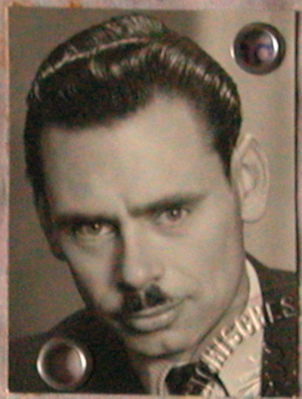
Passport photo Paul Pivnik, around 1938
Archive of the Jewish Museum Hohenems
Paul Pivnik manages to get across the Rhine. At first he is taken in at the Diepoldsau refugee camp. Later he is interned in the Swiss labor camp Felsberg. After the war, he finally succeeds in obtaining Swiss citizenship.
_und_Hans_Steiner.jpg) Paul Pivnik (right) and Hans Steiner in the internment camp, around 1939
Paul Pivnik (right) and Hans Steiner in the internment camp, around 1939
Archive of the Jewish Museum Hohenems
26 Paul Pivnik
”I played cards with him in the evening”. Paul Pivnik experiences fanaticism in Vienna and escapes to Switzerland via Hohenems.
Vienna – Hohenems, summer 1938
“After Hitler's invasion of Vienna, well Austria... I saw the march into Vienna and Hitler's drive to the Hofburg, Mariahilferstrasse. And the fanaticism of the population, it was like, abnormal. An enthusiasm, they shut down all thinking, all thought.”[1]
Paul Pivnik experiences the annexation of Austria to the German Reich. In november 1938, he wants to flee from Vienna via Hohenems to Switzerland. Like most refugees, he first tries to find out at the train station, where crossing to Switzerland would be possible.
In December 2005 in Zurich, he recounts his escape.
“And after Hitler's propaganda against the Jews, a hatred developed where previously there had been a strong friendship. For me, I would like to mention one case: I had a friend, Karl Fiala, with whom I played cards in the evening, and the next day after Hitler's invasion he was standing in front of my house in his SA uniform. Yes, that's exactly how Vienna was. And they talked about Vienna, the golden Viennese heart. They robbed all the Jewish apartments. I didn't look Jewish. And I saw how the Jews in Vienna had to clean the sidewalk with a brush, how they had to wash it. And there was someone there with a beard, and an SS man set his beard on fire. That was Vienna. The thought that it was impossible to stay in Vienna was something I couldn't get out of my mind, so I tried to get away the quickest way. The way was Vorarlberg.
And so I got off the train in Hohenems, and looked around for a whole day, and then I looked for a place to stay, and the place was occupied by “Kraft durch Freude,” we spent the night in the forest, and then I heard that in Hohenems, at the train restaurant, Jews who wanted to go to Switzerland were meeting, and I listened to everyone who didn't get through.”

Passport photo Paul Pivnik, around 1938
Archive of the Jewish Museum Hohenems
Paul Pivnik manages to get across the Rhine. At first he is taken in at the Diepoldsau refugee camp. Later he is interned in the Swiss labor camp Felsberg. After the war, he finally succeeds in obtaining Swiss citizenship.
_und_Hans_Steiner.jpg) Paul Pivnik (right) and Hans Steiner in the internment camp, around 1939
Paul Pivnik (right) and Hans Steiner in the internment camp, around 1939
Archive of the Jewish Museum Hohenems

